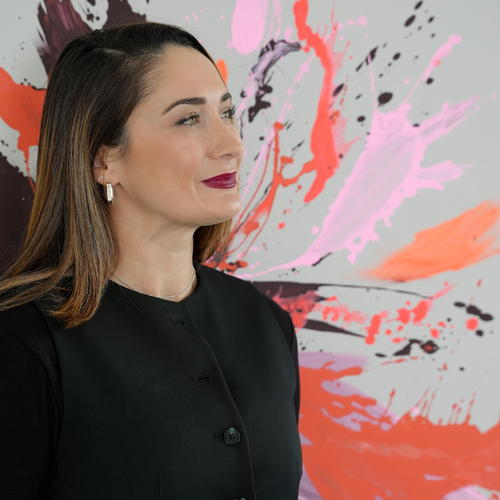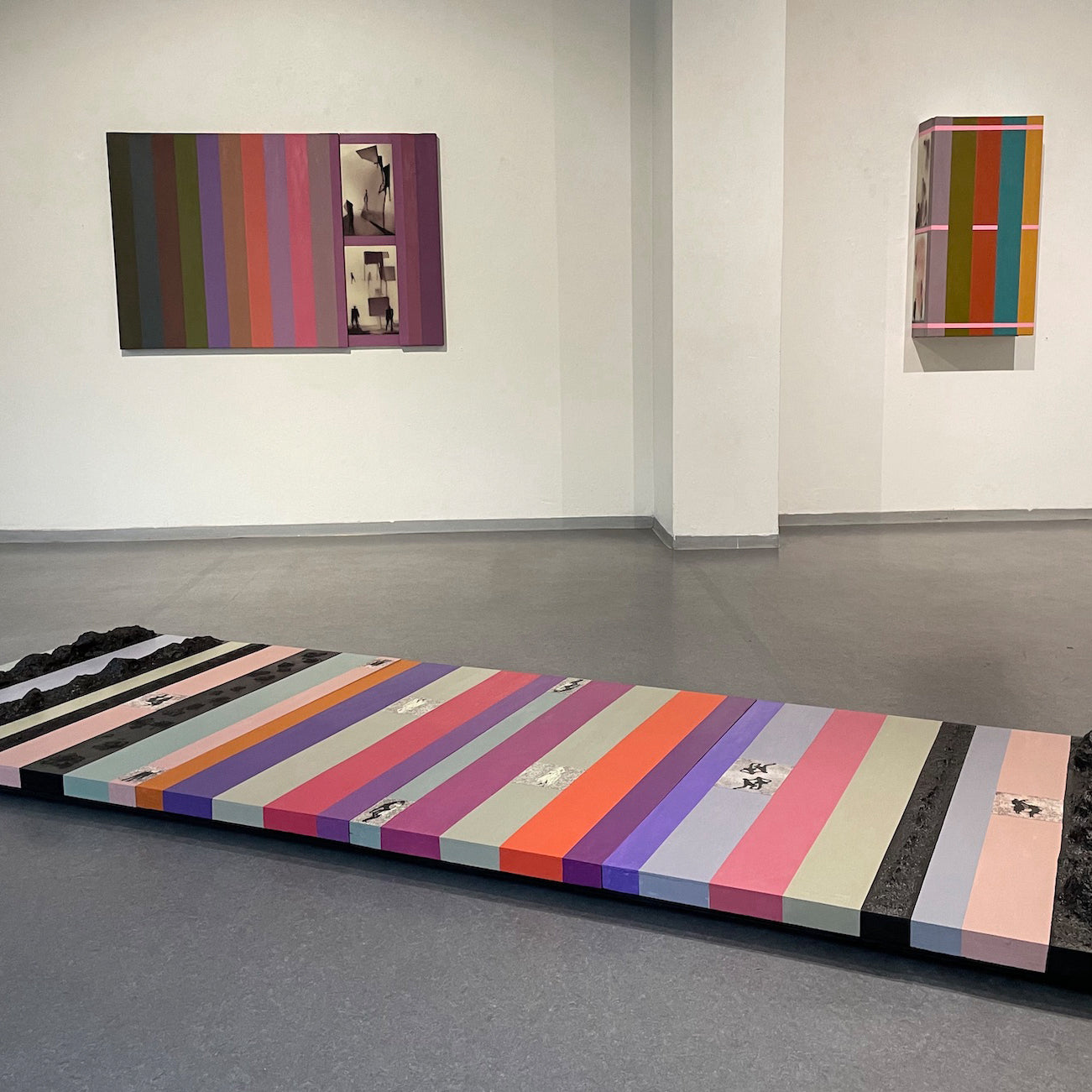Saara Mesterton’s art proceeds from a quest to understand the place of a human being surrounded by life and death. Color plays an important role in her paintings. She move between abstraction and figurative art, creating recognizable shapes and spaces from different color fields. Recently, her abstract oil paintings have been augmented with images created by artist and researcher Hannu Töyrylä using his own AI-based tools. In this way, an ambiguous narrative element is added to the abstract.
Saara Mesterton’s artwork is influenced by Bauhaus modernism and, foremost, by the color thinking of Josef Albers. Marimekko’s straight-line patterns also made a strong impression on her, in her youth when Marimekko T-shirts made everything look like moving stripes. In addition to painting, she have been creating performance videos. In these performances, she deals with issues and perspectives that sparked her interest in a subject. Performance always involves painting, animation, or other elements as part of the video. Often, there is also a song she sings herself.

Tell us story, why did you became artist?
I was born and grew up in a small town Kuhmo well-known for its International Chamber Music Festival. I became a music student and I went to Rome to study italian vocal music, but Italian visual culture and visual artists I met there had a huge impact on me. When I returned to Helsinki I turned from my musical studies into visual arts.
When you create a new work, how do you go about it? What comes first?
First, something takes over my mind. It can be a problem or an idea that disturbs me. I give power to that thing and test if it generates enough images and thoughts. If I am convinced, I start planning the work and preparing the canvas. Before I begin painting, I plan it extensively in my mind and explore the emotions aroused by the subject.

What can you tell us about your studio, what makes it special to you how does it influence the way you work?
My own studio means a lot to me because I participated in planning and conceptualizing the place myself. When these houses were built we had the opportunity to design studio apartments at the end of each buildings. I appreciate that the studio is a part of my home. I can easily check on unfinished projects. I often prepare canvases in the evening or early in the morning. There is a lot of natural light. The view from the windows overlooking a small forest is important to me. It is relaxing and helps me to concentrate. The forest is almost like an extension of my studio and I go for a walk there every day.

Is there a work of art in your life that has especially impressed you?
Alexander Calder's mobiles are magical. He has captured the idea of movement in an open and charming way without ulterior motives. The paintings of Brice Maden and Gabriela Evertz are touching. Maden's winding stripes are like a living organism. Gabriela Evertz combines colors and rhythms of stripes in a fine way. I have learned a lot from both of them.
Reach to the stars: where will you be in 5 years?
I am planning an art series based on old poems that have been passed down as part of oral tradition. I will continue collaborating with the artist and researcher Hannu Töyrylä. My abstract oil paintings are augmented with images created by Hannu using his own AI-based tools. This approach adds an ambiguous narrative element to the abstract works.





